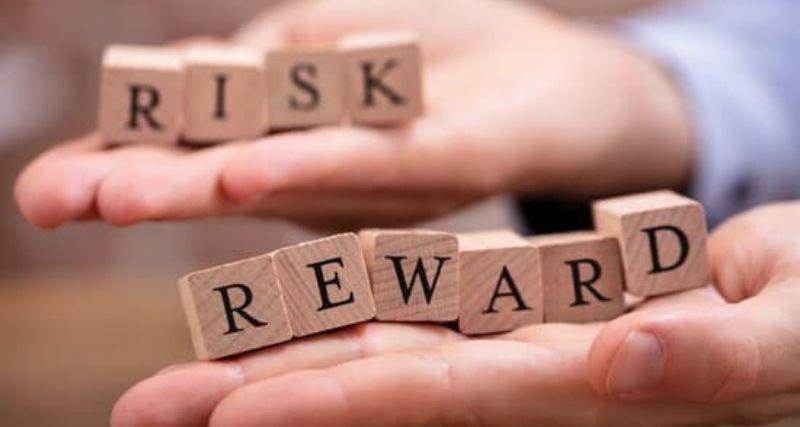What is Risk Reward Ratio in Forex
Data is continually updated by our staff and systems.
Last updated: 02 Jul 2020
We earn commissions from some affiliate partners at no extra cost to users (partners are listed on our ‘About Us’ page in the ‘Partners’ section). Despite these affiliations, our content remains unbiased and independent. We generate revenue through banner advertising and affiliate partnerships, which do not influence our impartial reviews or content integrity. Our editorial and marketing teams operate independently, ensuring the accuracy and objectivity of our financial insights.
Read more about us ⇾
It is repeated over and over again in many articles on money management, that one should always be sure one’s risk to reward ratio is 1:2 or lower (preferably 1:3 or 1:5).
The problem is that most of these articles are written by freelance writers, bloggers or webmasters who want to drive traffic to their sites and have never placed an order in the market. Novice traders end up running into a multitude of problems when trying to implement the rule in practice.
Let us review the definition and argument in favor of a low-risk reward ratio and also discuss the inherent problems with the rule.
First, what is the definition of Risk: Reward Ratio? Risk Reward Ratio in Forex is the amount of money that you may lose in a trade compared to the amount of money you win when it hits its take profit.
A risk to reward ratio of 1:2 means that one is risking one unit to make two. Risk is the amount of money that you may lose in a trade when it hits its stop loss, and reward is the amount of money you win when it hits its take profit.
For example, if you have a $5000 account and a 100 pip stop loss and want to lose only 2% of our capital, you would be trading with 1 mini lot (0.02 * 5,000 / (100 * 1.0 = 1 mini lot). Losing 100 pips or $100 on our trade is the risk. In order to make our reward twice that of our risk, we would need to trade with a profit target of 200 pips, which equates to $200 when using 1 mini lot. The larger the profit target against the stop loss the smaller the risk/reward ratio, which means that your risk is smaller than your reward.
Why is it argued that it is generally a good idea to have a smaller risk/reward ratio?
The argument placed out in favor of a lower risk/reward ratio is often seen via an illustration of a system that is only 50% profitable. With a 50/50 outcome, the lower risk/reward ratio of 1:2 or 1:3 can make your system profitable, as seen in the following illustration:
| Trades | Losing Trades | Winning Trades |
|---|---|---|
| 1 | +300 | |
| 2 | -100 | |
| 3 | -100 | |
| 4 | +300 | |
| 5 | +300 | |
| 6 | -100 | |
| 7 | +300 | |
| 8 | +300 | |
| 9 | -100 | |
| 10 | -100 | |
| Total | -$500 | +$1500 |
| Grand Total | +1000 in profit |
The proponents then argue from the table that if you use 1:3 risk /reward ratio constantly and are successful only 50% of the time, anyone can make a profit in the end.
The problem with this illustration and argument is that it parades a simplistic fairy tale. It imagines that even if the system is correct 50% of the time, which sounds good to the novice trader because it is akin to the odds of a coin toss, then it can profit because the win is three times larger than the loss.
The problem is, the 50% win scenario (at best) should be seen as the win percentage of most systems that have the stop loss and take profit roughly equal in size, or as having a risk/reward ratio of 1:1. As soon as one doubles or triples the take profit relative to the stop loss, the win % will often decrease proportionally.
Thus, if the take profit is double the stop loss, the winning percentage will fall to 25% (50%/2); and if the take profit is triple the stop loss, the winning percentage will fall to 16% winning trades (50%/3).
This means that the table above should look more like this, for most systems:
| Trades | Losing Trades | Winning Trades |
|---|---|---|
| 1 | +300 | |
| 2 | -100 | |
| 3 | -100 | |
| 4 | -100 | |
| 5 | +300 | |
| 6 | -100 | |
| 7 | -100 | |
| 8 | -100 | |
| 9 | -100 | |
| 10 | -100 | |
| Total | -$800 | +600 |
| Grand Total | -200 in loss |
Under true market conditions, the system with a risk/reward ratio of 1:3 will likely win 2 out of 10 trades (at best), and thus come out a net -$200 loser, instead of the rosy table above that has the system making $1500 on the romantic idea of achieving 50% win accuracy with a 1:3 risk/reward setting.
In the quickly vacillating, often times random market moves of the market, your stop loss will be often hit, and if your take profit is three times that of your stop loss, it will be hit three times more often than the 50% odds of a coin toss, resulting in consistent losses.
Conduct the experiments yourself. Take 10 or more different indicator-based systems, remove the opposite signal close mechanism, and work with only stop losses and take profits. Then as a baseline, you can back-test each system using a stop loss of 100 pips and a take profit of 100 pips, which would be the 1:1 risk reward ratio. Most systems will be losers under this scenario and they will be probably losing at 50% or less accuracy.
Moreover, because of transaction costs, the average loss will be greater than the average win. Next, experiment with lowering the risk/reward ratios. Try out the 1:2 risk reward (stop loss of 100 pips and take profit of 200 pips) and the 1:3 risk reward (stop loss of 100 pips and take profit of 300 pips). You will see the same losing performances, but this time the losing performances will have less to do with the average losing trade being greater than the average winning trade, and more to do with the percentage accuracy dropping dramatically.
The problem is that novice traders are being told to manipulate their system to conform to a hard and fast rule of trying to stretch out a double/triple sized take profit relative to a stop loss. Often the writers on the risk/reward ratio do not discuss if the low risk/reward ratio is achieved through having wide targets or tight stop losses.
This can create its own set of problems, because then traders naively try to tighten their stop losses, in an arbitrary fashion, which disposes them to getting stopped out with great frequency. Even when the writers caution that the stop loss has its own set of rules that cannot be ignored or broken and that the stop loss cannot be too tight – novice traders are in the dark as to how big that stop loss should be, and are forced to imagine that once they figure out the appropriate stop loss value, the take profit is just a simple multiple of the stop loss (2 or 3 times larger, in order to adhere to the low risk/reward rule).
Alternative to Risk: Reward Model: Build Low Risk / Reward Systems Organically via Opposite Signal Close
It can be advantageous if the system were to ultimately end up with a low risk/reward ratio, but in fairness, any system molding to fit an arbitrary risk/reward ideal can create disastrous systems. Instead, the process of creating a system should be more organic, that the exit rules should have more in common with the entry rules (the reverse of the entry signal), and less to do with the arbitrary or optimized values of stop loss and take profit.
There was an expert advisor who once said:
I have created dozens of systems, and often when initially creating them, I withhold adding a stop loss and take profit and let them exit on the basis of a reversal from the original entry signal. In short, they are initially stop and reverse systems, entering from one indicator condition or set of rules, and exiting and reversing direction with the opposite indicator condition or set of rules. For example, if I create a moving average crossover system, I enter long when the fast moving average crosses over the slow moving average, and exit and reverse to short when the fast moving average crosses under the slow moving average. I will conduct an optimization on the period of the slow moving average and also on the type (simple, exponential, smoothed etc). Initially, I will refrain from adding any additional indicators as confirmations or filters, or adding any advanced exits (such as trailing stops, trailing profits, break even stops), and instead, only use the stop loss at a fixed value of 100 pips.
If I discover a good performing system via this method, I will have a glance at the strategy tester report tab, and of the many statistics I see there, I will see that the average win size is often larger than the average loss, even though the win percentage will often be less than 50%.
Note: Because my system exits by the nature of the opposite entry signals, and not by fixed stops or profits, one is forced to measure the risk/reward only in relation to the average win and average loss.
I am usually seeing that a good system has a low risk/reward ratio AFTER the back-test, as one of many markers of why the system is a good performing system. I did not start off by forcing my average winning trade to be two to three times larger than my average losing trade. It just turns out to be such because of the fact that most trending systems cannot achieve profitability unless they are such. The simple reason: the markets trend only a small percentage of the time, estimated at around 20-30% of the time, while the rest of the time they get caught in trading channels and/or random whipsaws. The only other way to increase profitability is to try to manipulate the system to become more accurate, outfitting it with more confirmation indicators and filters and advanced exits (trailing stops, trailing profits, break even stops), but with each additional item added, one is increasing the risk of curve fitting and over-optimizing.




